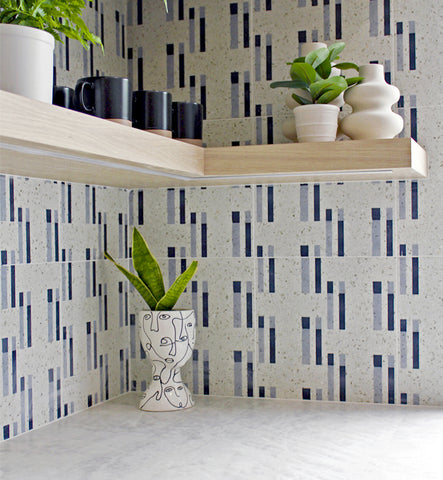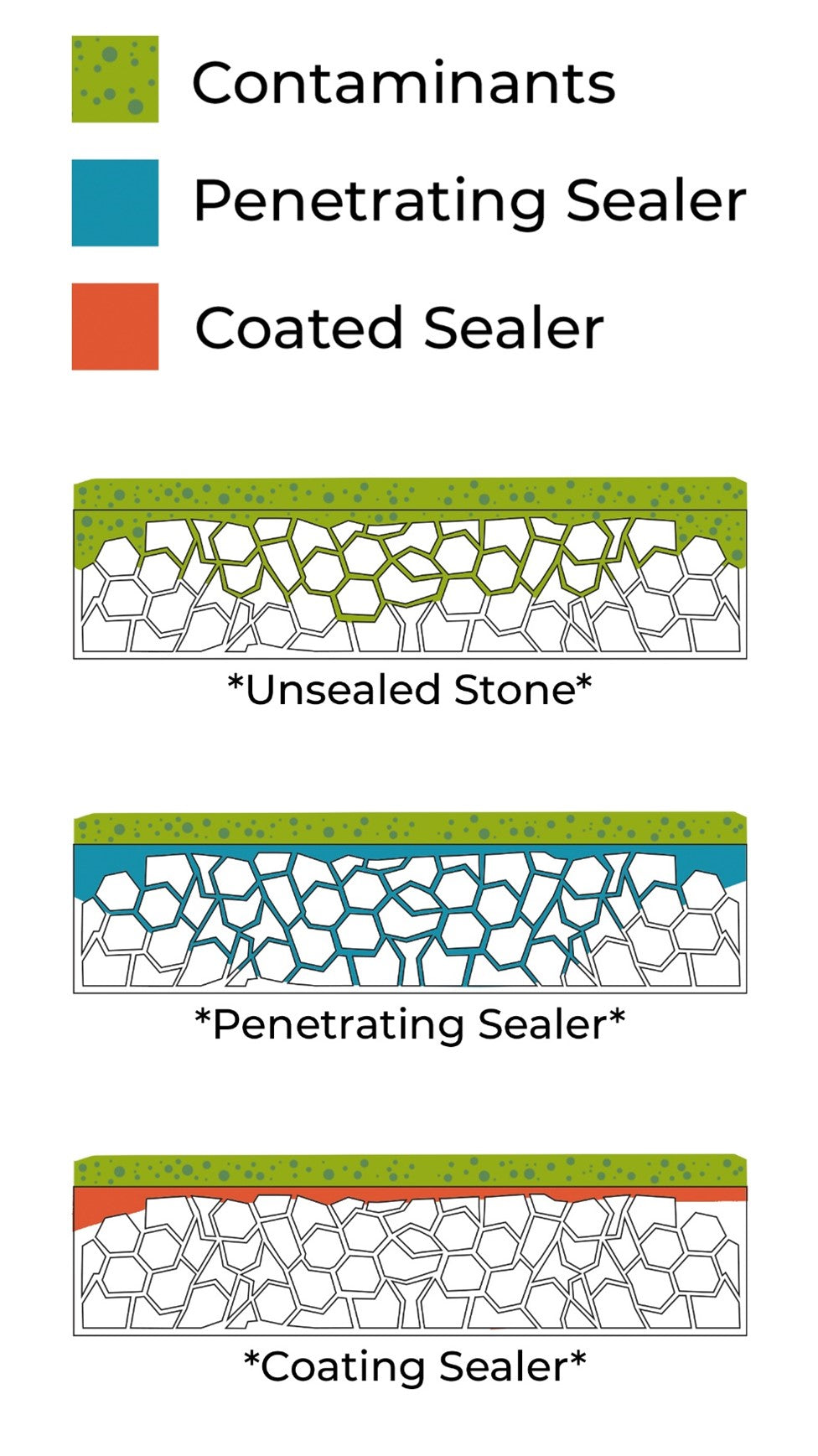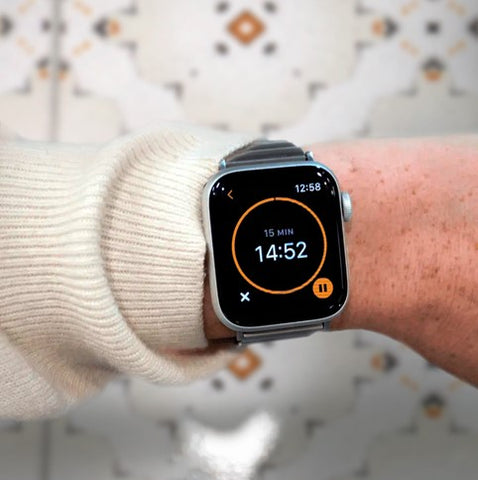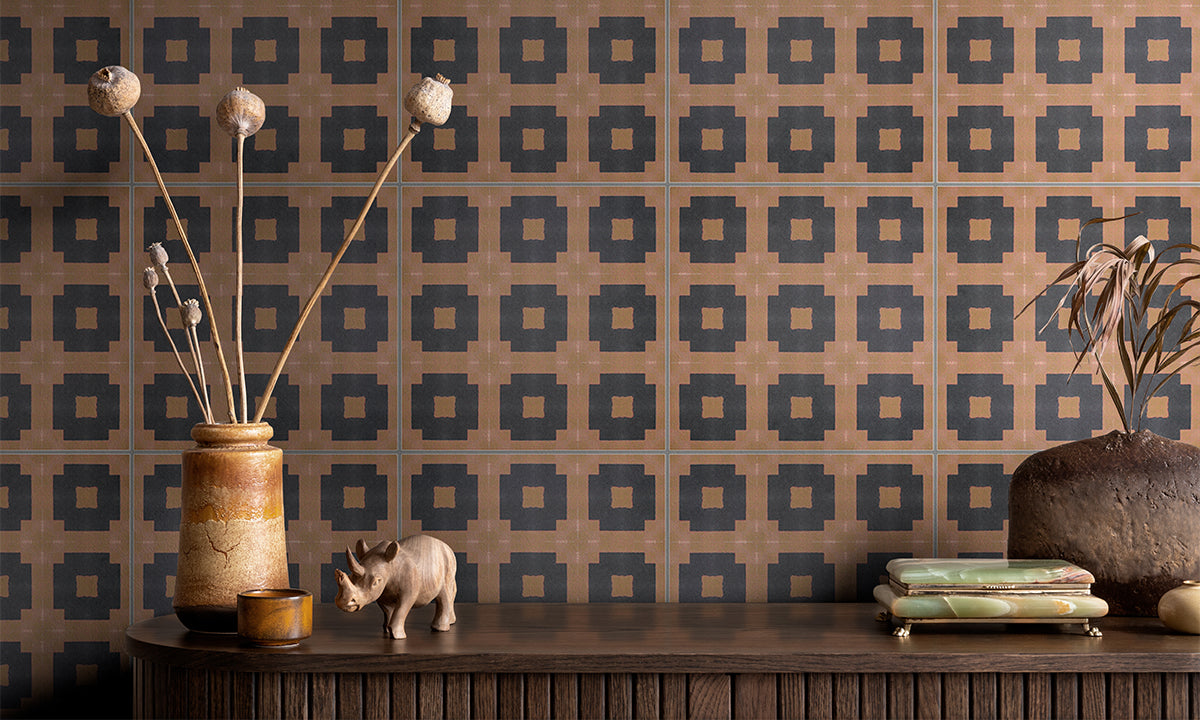What is a Tile Sealer? And When Should It Be Used?

If you’re planning on having tile installed, you’ll find that sealing is a critical part of the installation process. Unwanted dirt? Stains? Spills? Tile sealer protects your tile!

We’re here to help you with information such as:
- What is a tile sealer and its purpose?
- Should I use a sealer?
- What are the different types of sealers?
- What’s a carrier?
- What sealer should I use for LIVDEN tiles?
- How do you apply tile sealer?
- How often should I re-seal?
What is a tile sealer and its purpose?
A tile sealer is a liquid that provides tile and other surfaces with long-lasting protection from staining agents and water damage. It is often used in spaces subject to moisture. Resealing is required and helps keep the product looking its best!
Most tile sealants, like Miracle Sealant 511 Porous Plus, can be used on concrete, glass, granite, limestone, marble, travertine, quartz, and many other textiles. It will also add the inherent benefit of minimizing wear and tear, as well as making your tile easier to clean.
Should I use a sealer?
The short answer is yes! Even if your tile comes pre-sealed, it should be sealed again after installation and grout. If you cut any tiles, you should also re-seal the exposed cut edges. This will protect your installed tiles from moisture and staining, It is a must!
What are the different types of sealers?
Penetrating Sealer
High-grade penetrating sealers enter the pores of tile and stone, and once fully cured, will not change the look of tile! You can also reapply without having to strip the existing sealer. This is the type of sealer that should be used for LIVDEN tiles!
Topical Sealer
A topical sealer is technically more of a coating agent. It rests on top of the tile or stone and resists external dust, dirt, and moisture. We do not recommend this sort of “sealer” as it tends to wear unevenly and needs to be manually stripped from the tile or stone each time you reseal. This will damage LIVDEN tiles and is strongly discouraged from being used on them.
What is a carrier?
A carrier is a key agent in sealers that allows the chemicals to absorb into the pores of tile and stone. Silicone and fluoropolymers contained within the sealer can then penetrate the pores of tile and stone to allow better stain resistance. The deeper it penetrates, the greater it protects! There are 2 different kinds of carriers:
- Solvent-based
- Water-based
These days, most penetrating sealers are water based, and contain fewer caustic properties compared to years past.
See the difference!
The diagram below shows the differences between a completely unsealed stone subjected to contaminants (debris, dirt, dust, etc.) compared to a sealed stone, with both a penetrating sealer and externally coating sealer. What a difference sealer makes!
Once the sealer is carried into the pores, it eventually dissipates, leaving behind the protective sealer layer. You can contrast the degree of protection penetrating/impregnating sealers provide to tile and stone, compared to a superficial coating seal or no sealant at all! Science is great!
What sealer should I use for LIVDEN tiles?
The following are high-grade penetrating sealant that are appropriate for LIVDEN tiles:
- Aquamix Sealers Choice Gold
- Stonetech Bulletproof
- Miracle Plus 511 Porous Plus
- Van Hearron Stainguard
- Ocean Care High-Performance Penetrating Sealer
- Stonetech Reviatalizer Cleaner & Protector
Uses
Advanced sealers, like Ocean Care, are designed to provide maximum protection for your tiles against oil and water-based stains. While sealers of this grade can be used on interiors and exteriors, LIVDEN tiles should never be installed in exterior applications or submerged water applications. The proper sealant for LIVDEN tiles can be used on:
- Backsplashes
- Vanity walls
- Accent walls
- Bathroom floors
- Powder Room floors
- Fireplaces
- Stair risers
- Ceiling tile
Expected Wear
How long can you expect your sealer to wear? That depends mostly on the product you choose. Most sealants have an expected wear time of up to 5 years on interior surfaces. However, for LIVDEN tiles, we recommend an annual reseal in order keep your tile installation looking immaculate for years to come!
Cautions
Before you being, remember to:
- Read all manufacturer instructions for your sealant of choice before use.
- Use your sealer only as directed!
- Make sure your tile surface is completely clean before applying sealer.
- Allow new grout to cure for a minimum of 72 hours before applying sealer.
- Use your sealer in a well-ventilated area.
With those words of caution, let's dive into the process and learn exactly how to seal LIVDEN tile!
How do you apply Sealer? The 7-Step Sealing Process
Step 1: Create a clean tile surface
Clean your stone tiles by wiping down the tile with a sturdy, absorbent cloth. You need to ensure that the surface you are working with is clean and free from waxes, coating, debris, or other contaminants.
Step 2: Prep sealer
Now, it’s time to turn our attention to the sealer.
To prepare the sealer for its surface application, you will need to shake the sealer bottle a few times. Remember to make sure the bottle cap is closed and securely in place before you start shaking to avoid unwanted messes!
Step 3: Apply sealer
Once the sealer is prepped, it’s time to apply!
For sealer application, you’ll need an applicator of some sort. You can use a clean cloth, paint pad, roller, brush, or low-pressure sprayer. With your tool of choice in hand, liberally apply the sealer in an even coat across the tile surface.
Step 4: Wait and watch
After applying an even coat to your stone tile installation, you will have to wait about 10-15 minutes. This time allows the sealant to penetrate the surface of the tile. During this time, it’s imperative that you do not let the sealant dry completely! You can add more sealer as needed to ensure that the surface remains wet.

Step 5: Wipe Down
Once that time has elapsed and the sealer has penetrated the tile surface, you can wipe down your installation with a clean, absorbent towel.
Step 6: Let Cure
Now that you’ve wiped down your sealed tile installation, it’s time to let it fully cure. Typically, a full cure can be achieved in 24-72 hours. After that time has passed, your stone tiles are ready for use!
Step 7: Maintenance
You might be wondering: how long does sealer typically last?
The truth is: it depends! It comes down to the type/brand you use, the tile installation location, and how much wear and tear that space receives over time. To reiterate: Because of the nature of LIVDEN tiles, we recommend an annual re-seal.
Signed-Sealed-Delivered
Now that we’ve covered what sealer is, it’s purpose, and variations, it’s time to wrap up our Tile Sealer lesson.
We hope you enjoyed your crash course!
If you have any questions about other sealer related questions, don’t hesitate to reach out to us! Drop us a line and we’d be happy to help point you in the right direction.
Had enough sealer today? Get sealer off your mind and check out our collection of decorative tiles made from recycled materials.
More Posts
-
What is a Tile Seal...
If you’re planning on having tile installed, you’ll find that sealing is a critical part of the installation process. Unwanted dirt? Stains? Spills...
Read More -
What is Thinset? We...
Everything You Need to Know About Thinset What in the world is thinset? If you’ve had the pleasure of renovating a space, thinset has likely be...
Read More -
All About Tile Trim
When it comes to your interiors, are you a big picture person or a small details person? When you’re investing time and thought into a project des...
Read More







Comments
0 Comments
Leave a Comment